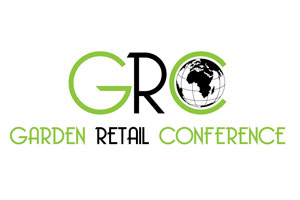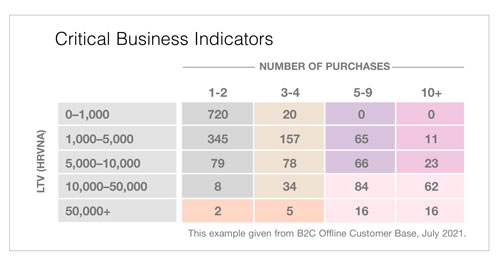4/1/2022
Virtual Connection
Jennifer Polanz

One of the main takeaways from the first Global Garden Retail Conference hosted in early February is the concerns of garden retail aren’t subject to borders. The more than 1,400 registrants from across the world could find many commonalities from the educational seminars, which spanned topics like sustainability, e-commerce, global trends, customer loyalty and branding, among others.
“We received a surprising quantity of positive comments as attendees registered and … to me, that’s a very positive indicator of high interest in something like this being repeated,” says Sid Raisch, garden retail consultant and co-creator of the event with Australia-based consultant John Stanley. “We accomplished the launch of a global, and virtual event, and that is a strong formula by bringing forward stories garden retailers meeting the new demand for plants in fresh ways from interesting places. It's exciting to think of this continuing.”
Here are a couple of key points:
 Watch for the Stones
Watch for the Stones
The keynote speakers were Ball Horticultural Company’s CEO & Chairman of the Board Anna Ball and her daughter, Susannah Ball, who’s co-lead on the company’s sustainability initiatives. They focused on the worldwide opportunities for horticulture, which also included what Anna called “rocks” that could trip up our industry. First, the good.
There continues to be a growing (no pun intended) presence for plants at retail, both in brick-and-mortar stores and through e-commerce. Anna highlighted a statistic that showed a net gain in the number of brick-and-mortar stores in 2021, the first time in five years where the number has gone up.
“It’s very important, and people want to go into stores,” Anna says. “And in order to have e-commerce you have to have the brick-and-mortar to back it up.”
Anna and Susannah also mentioned the intense popularity of plants over the past two years and the impact they’ve had on consumers’ well-being.
“I think probably a lot of those plant parents were people that maybe couldn’t go out into nature because of where they lived or what their circumstances were, but they could bring it into their house and get that benefit right from their home,” Susannah says of the plant parent trend.
However, Anna warned that good companies have to not only ride the waves of popularity, but look out for rocks that are revealed when the tide goes out. Some of those rocks, Susannah says, are uncertainty from supply chain issues, lingering effects of COVID and continued labor shortages.
Both suggested combating the rocks by investing—in infrastructure, technology and people. Anna adds it’s especially important to invest in IT to make sure your company is strong and secure. Data is another area where companies in the green industry can invest.
“We have to have data; we have to have information that goes with the gut instinct,” Anna says. “And no matter your size, you need to get that.”
They concluded by expressing their optimism for the coming year, noting a new sales level has been set and the goal is to keep moving the bar higher.
Quick Hits on Omnichannel
Warren Patterson, CEO of OrderEase, a wholesale order management software company, gave a quick rundown on omnichannel selling and some of the key components to marrying in-store sales with e-commerce. Here are a couple of quick hits:
• It’s important to form a digital relationship with your vendors where the data can flow up and down the order chain easily. Retailers need to be able to share product information, images, data sheets and other details. Those typically come from the suppliers.
• Retailers need a point-of-sale system that can work with the e-commerce platform (some POS systems even have an e-commerce function) and e-commerce needs to be customizable for omnichannel sales.
• It’s vital to have an accurate inventory of what’s on hand at the store, which can be accomplished through product-level SKUs and complete data in the POS system.
• Warren recommends if you’re a smaller operation, pick one or two channels and start by doing those well, then expand over time. It’s important to maintain consistency, quality and value for customers.
 Customer Engagement
Customer Engagement
One of the sessions I heard the most buzz about was on customer engagement by Ukrainian retailer Regina Razumovskaya, co-owner of Botanic Market Garden Centre. She has an MBA and 15 years in marketing and management in the Russian pharmaceutical industry before moving to Ukraine and starting a garden center with nurseryman Vladimir Razumovskyy.
“What I really like about the garden center business is that you have this kind of direct touch with your customers,” she says. “All you need to improve your business is to have your eyes in order to look into them, to have your ears to listen to them. And this is enough data to move your business forward because you make them happy and your business is prosperous.”
More key points:
• She breaks down customers into key groups and segments. If someone hasn’t returned to the garden center after a year, they don’t even make one of the segments—there’s “no probability the customer will appear at your garden center.”
• She separates out retail customers from landscape design customers, as well as in-store customers and online customers.
• Then she defines each segment within each of the above customer groups by number of purchases and lifetime value (see the chart). Customers with more purchases and higher lifetime values trust you and will be open to more loyalty programs and activities. They’re thankful for more education, training and coaching. Trial programs increased sales within the higher purchase groups by 84%, she says.
• She calls customers on the lower end “suspects” who don’t trust you yet. The more effective activities are post-sale contact via phone, how-to instruction or videos. “I was a bit surprised when we did this act we increased the conversion ratio for (a) third visit by 34%.
“It is critical to define customer segments clearly to understand who are they, what they think about (the) company and what they expect from you,” she says. “When you understand that, your loyal game is effective.” GP